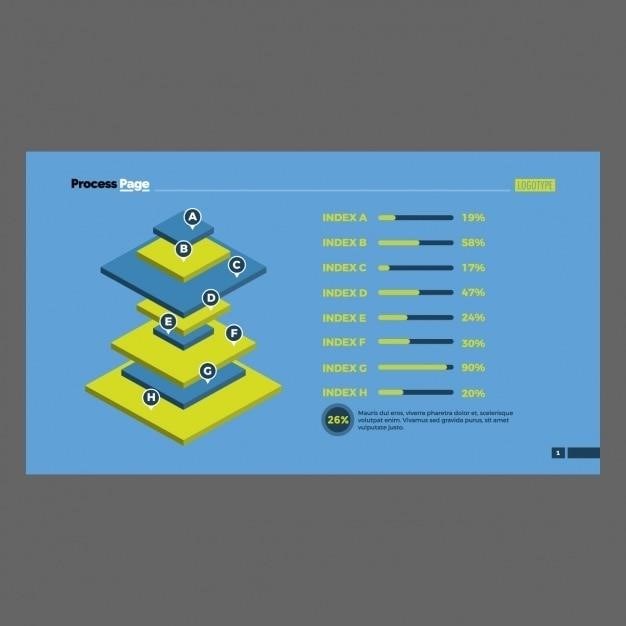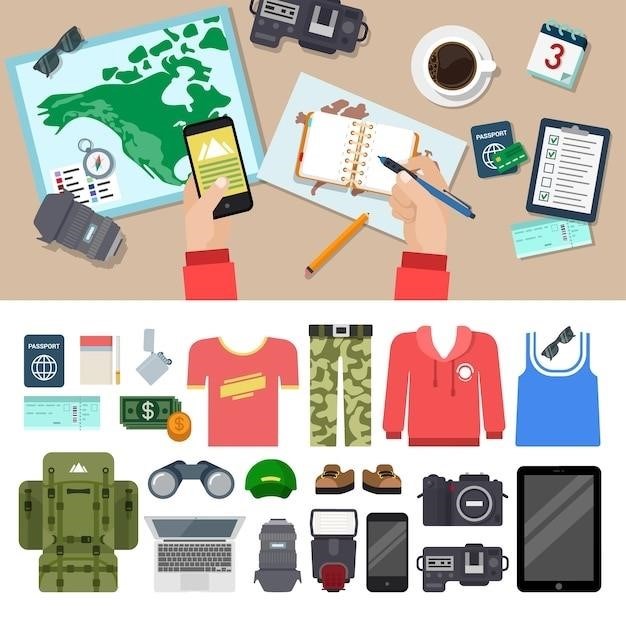ifs parts mapping pdf
Internal Family Systems (IFS) Parts Mapping
Internal Family Systems (IFS) Parts Mapping is a self-discovery tool used to understand and communicate with the different parts of yourself․ This method can be helpful for identifying and addressing challenging emotions, behaviors, and beliefs․ IFS Parts Mapping can be done individually or with the guidance of a therapist․
Introduction to IFS Parts Mapping
Internal Family Systems (IFS) Parts Mapping is a powerful and insightful approach to understanding the inner workings of your mind․ It’s based on the idea that we are not simply a single, unified self, but rather a complex system of different “parts” that each have their own unique roles, motivations, and experiences․ Imagine your mind as a family, with each part representing a different member, each with their own distinct personality, beliefs, and desires․ This model offers a compassionate and non-judgmental way to explore your inner world, fostering self-acceptance and understanding․
IFS Parts Mapping is a valuable tool for personal growth and development․ It can help you identify and understand the different parts of yourself, including those that might be causing you difficulties․ By gaining awareness of these parts and their motivations, you can begin to create a more harmonious relationship with them, leading to greater emotional well-being and personal fulfillment․ The process can help you move beyond simply managing your emotions to actually healing them at their root․
What is IFS Parts Mapping?
IFS Parts Mapping is a visual representation of the different parts within your inner world․ It’s like creating a map of your internal family, with each part identified and labeled․ The process involves exploring your thoughts, feelings, and behaviors to identify the different parts that are present․ These parts can include “Managers,” who try to control and regulate your emotions and behaviors; “Firefighters,” who attempt to extinguish intense emotions quickly; and “Exiles,” who hold onto painful experiences and emotions that have been pushed away or hidden․
The map itself can take many forms, from simple lists to more elaborate diagrams․ It can be as detailed or as basic as you like, and it can be created on paper, digitally, or even mentally․ The important thing is that it helps you to visualize the different parts of yourself and their relationships to each other․ By creating a map, you gain a deeper understanding of your inner landscape, which can be a powerful tool for self-discovery and healing․

The Benefits of IFS Parts Mapping
IFS Parts Mapping offers numerous benefits for individuals seeking to improve their well-being and navigate challenging emotions․ By understanding and acknowledging the different parts within themselves, individuals can cultivate compassion and acceptance for these parts, fostering a more harmonious internal environment․ This process can lead to a reduction in self-criticism and judgment, allowing individuals to move forward with greater self-compassion and understanding․
IFS Parts Mapping also promotes self-awareness, providing individuals with a deeper understanding of their motivations, reactions, and behaviors․ By recognizing the roles different parts play in their lives, individuals can gain valuable insights into their patterns and triggers, empowering them to make more conscious choices․ Additionally, IFS Parts Mapping can facilitate communication with these parts, fostering a sense of connection and collaboration within the internal system․ This enhanced communication can lead to a more balanced and integrated sense of self, ultimately promoting greater emotional regulation and resilience․
The Role of the Self in IFS
In the Internal Family Systems (IFS) model, the Self is considered the core of our being, a source of inherent wisdom, compassion, and strength․ It is not a part but rather the essence of who we are․ Unlike the parts, which are often driven by past experiences and protective mechanisms, the Self remains unaffected by these influences․ It represents our true nature, untouched by the wounds and burdens of the past․
The Self acts as a guiding force within us, offering guidance and support to our various parts․ It encourages us to connect with our inner wisdom, access our creativity, and cultivate a sense of peace and well-being․ The Self is inherently compassionate, understanding, and accepting, providing a safe and nurturing space for our parts to heal and grow․ When we connect with the Self, we tap into a source of strength and resilience that empowers us to navigate life’s challenges with greater ease and grace․
Types of Parts in IFS
In Internal Family Systems (IFS), various parts within us take on different roles and functions․ While each individual’s inner world is unique, IFS identifies several common types of parts⁚
- Managers⁚ These parts are responsible for maintaining order and control within the system․ They may be strict, critical, or perfectionistic, aiming to keep things running smoothly and avoid potential threats․
- Firefighters⁚ These parts are the first responders to emotional distress․ They may act impulsively or engage in self-soothing behaviors to alleviate discomfort․ While they offer temporary relief, their actions can sometimes lead to further complications․
- Exiles⁚ These parts hold painful emotions, memories, or experiences that have been pushed away or exiled from conscious awareness․ They may be associated with feelings of shame, guilt, or fear, often seeking to protect themselves from further hurt․
Understanding these different parts and their roles can help us identify and address the underlying needs and motivations behind our thoughts, feelings, and behaviors․
Managers
In the IFS model, Manager Parts are often described as the “executive team” of our inner world․ They strive to maintain order, control, and safety within our system․ These parts may appear as the voice of reason, the inner critic, or the responsible planner․ They may be motivated by a desire to avoid pain, protect us from perceived threats, or maintain a sense of control․
Examples of Manager Parts might include⁚
- The Perfectionist⁚ This part strives for excellence and may be critical of any perceived imperfections․
- The Controller⁚ This part seeks to maintain order and may become anxious when things deviate from their plan․
- The Rule Follower⁚ This part adheres strictly to rules and expectations, sometimes to the point of rigidity․
While Manager Parts can be helpful in certain situations, they can also become overly controlling, leading to stress, anxiety, or difficulty relaxing․ Understanding the role of Manager Parts can help us recognize their motivations and learn to work with them more effectively․
Firefighters
Firefighter Parts are our internal first responders, stepping in to manage intense emotions and urges․ They are often triggered by situations that feel overwhelming or threatening, aiming to protect us from experiencing pain or discomfort․ Firefighter Parts can manifest as impulsive actions, addictive behaviors, or emotional outbursts․
Here are some examples of Firefighter Parts⁚
- The People Pleaser⁚ This part seeks to avoid conflict by putting others’ needs above their own, potentially leading to resentment․
- The Addict⁚ This part uses substances or behaviors to numb or escape painful emotions․
- The Anger-Prone Part⁚ This part expresses frustration or rage as a way to protect oneself from feeling vulnerable or helpless․
While Firefighter Parts may offer temporary relief, they often create more problems in the long run․ Understanding their purpose and the underlying emotions they try to protect us from can help us develop healthier coping mechanisms․

Exiles
Exile Parts carry the most pain and vulnerability within our inner system․ Often stemming from traumatic experiences or deeply held negative beliefs, these parts are usually hidden from our conscious awareness․ Exiles are often associated with feelings of shame, fear, sadness, or anger, and they may represent experiences of abuse, neglect, or loss․
Examples of Exile Parts include⁚
- The “Worthless” Part⁚ This part holds the belief that one is not good enough or deserving of love and acceptance․ It may originate from experiences of criticism or rejection․
- The “Traumatized” Part⁚ This part carries the memories and emotions of traumatic events․ It may manifest as anxiety, flashbacks, or avoidance behaviors․
- The “Angry Child”⁚ This part holds the anger and resentment from unresolved childhood experiences․ It may express itself through outbursts, passive-aggression, or difficulty trusting others․
Understanding and connecting with our Exile Parts is crucial for healing and self-acceptance․ By acknowledging their pain and offering them compassion, we can begin to integrate these parts and create a more harmonious inner world․
How to Create an IFS Parts Map
Creating an IFS Parts Map can be a powerful exercise for gaining self-awareness and understanding your inner world․ It involves identifying and naming the different parts within you, and exploring their roles and motivations․ Here’s a simple process⁚
- Choose a Focus⁚ Start by identifying a specific issue or emotion you want to explore․ This could be a recurring pattern of behavior, a challenging relationship, or a feeling that you struggle with․
- Identify Your Parts⁚ Pay attention to the thoughts, feelings, and urges that arise as you focus on your chosen issue․ Ask yourself, “What parts of me are present right now?” Give each part a name that reflects its role or the emotions it carries․ For example, you might have a “Perfectionist” part, a “Worrier” part, or a “Shameful” part․
- Describe Your Parts⁚ For each part, consider its characteristics, such as its age, gender, and the emotions it often experiences․ Think about its role in your life, what it protects you from, and what it hopes to achieve․
- Connect with Your Parts⁚ Once you’ve identified and described your parts, take some time to connect with each one individually․ Imagine yourself speaking to the part, acknowledging its presence and offering it compassion and understanding․
- Create a Visual Representation⁚ You can create a visual map of your parts by drawing a simple diagram, using sticky notes, or finding images that represent each part․ This can help you visualize the different parts and their relationships within your inner system․
Remember, creating an IFS Parts Map is an ongoing process․ As you continue to explore your inner world, you may discover new parts or gain deeper understanding of the parts you already know․
Using IFS Parts Mapping in Therapy
IFS Parts Mapping is a valuable tool for therapists using the Internal Family Systems (IFS) model․ It provides a framework for understanding the complexities of a client’s inner world and promotes healing through compassion and self-compassion․ Therapists can use Parts Mapping to help clients⁚
- Identify and Name Parts⁚ Therapists guide clients in identifying and naming their internal parts, helping them to understand the various voices and experiences within them․
- Explore Part Roles and Motivations⁚ By exploring the roles and motivations of each part, therapists and clients can uncover the underlying needs and fears that drive them․ This helps to de-stigmatize and demystify difficult emotions and behaviors․
- Develop Compassion for Parts⁚ Therapists encourage clients to develop compassion and understanding for their parts, even those that seem difficult or challenging․ This fosters a sense of acceptance and allows for healing and integration․
- Facilitate Inner Dialogue⁚ IFS Parts Mapping helps clients learn to communicate with their parts in a compassionate and constructive way․ This can lead to greater self-awareness and a more harmonious relationship with their inner world․
- Strengthen Self Leadership⁚ Through IFS Parts Mapping, clients can develop a sense of Self-leadership, allowing them to navigate their inner world with greater clarity and compassion, ultimately leading to greater well-being and resilience․
By using IFS Parts Mapping in therapy, clients can gain a deeper understanding of their inner world, develop more compassionate relationships with their parts, and ultimately achieve greater emotional well-being․
Resources for IFS Parts Mapping
There are numerous resources available to support individuals interested in learning more about and implementing IFS Parts Mapping․ These resources can provide guidance, tools, and support for self-exploration and therapeutic practice․
- Books and Articles⁚ Several books and articles have been written on IFS Parts Mapping, providing detailed explanations of the model and practical guidance for using it․ Some popular titles include “Self-Therapy” and “Internal Family Systems” by Richard Schwartz, the founder of IFS, and “The Mindful Self-Compassion Workbook” by Kristin Neff, which includes sections on IFS․
- Websites and Online Communities⁚ Online platforms like the Internal Family Systems Institute website (www․ifs-institute․com) and various online communities dedicated to IFS provide a wealth of information, articles, and resources for practitioners and individuals interested in IFS․ These platforms also offer opportunities for connection and support․
- Workshops and Trainings⁚ Numerous workshops and trainings are available that offer in-depth instruction on IFS Parts Mapping․ These programs can provide a comprehensive understanding of the model and practical skills for applying it in therapy and personal growth․
- Apps and Tools⁚ Some apps and tools have been developed to support IFS practice, including guided meditations, journaling prompts, and interactive exercises for exploring parts and fostering self-compassion․
- Therapists and Coaches⁚ Finding a qualified therapist or coach trained in IFS can provide personalized guidance and support in using Parts Mapping for personal growth and healing․ Many therapists and coaches specialize in IFS and offer individual or group sessions․
By exploring these resources, individuals can gain a deeper understanding of IFS Parts Mapping and access the tools and support needed to embark on their own journey of self-discovery and healing․
IFS Parts Mapping is a powerful tool for understanding and relating to the different aspects of our internal world․ It helps us move beyond the simplistic view of a single “self” and recognize the diverse parts that make up our inner landscape․ By identifying, understanding, and communicating with our parts, we can cultivate a more compassionate and harmonious relationship with ourselves․
IFS Parts Mapping can be a valuable tool for personal growth, self-compassion, and healing․ Whether used in therapy or independently, it encourages self-awareness, acceptance, and a deeper understanding of our inner workings․ By acknowledging and nurturing all parts of ourselves, we can create a more balanced and fulfilling life․
While it’s important to note that IFS Parts Mapping is not a quick fix, it offers a profound and transformative approach to healing and personal development․ It empowers us to take responsibility for our inner world and cultivate a more harmonious relationship with ourselves and others․


